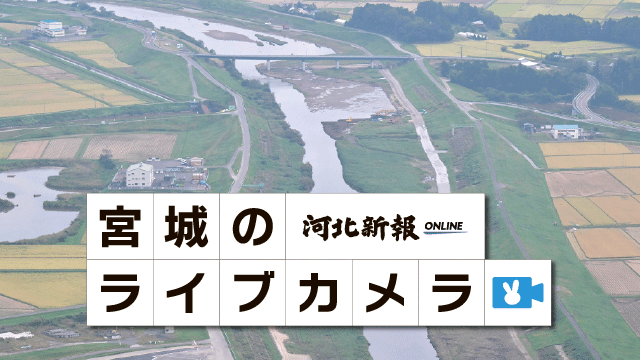Part 10: Tsunami Fires (2) Limitations / Lack of Water Prevents Fire Extinguishing



During the Great East Japan Earthquake, the fire rose from two areas in the center of Yamada Town, Iwate Prefecture, immediately after the town was attacked by a tsunami around eight meters high. The fire spread instantly, right in front of the volunteer fire corps.
Sadaki Kaitani (41), a member of the Yamada Town volunteer fire corps division 7, was at Yamada Hachimangu on high ground after evacuating from the tsunami. At around 4 p.m., he saw white smoke rising from a corner of his designated area, Hachimancho.
“It’s a fire. I have to go and put it out.” Cars, boats, rafts used for aquaculture, and houses lay stacked on the road, washed up from the tsunami. The fire engine escaped the waves, but Kaitani gave up driving. Together with other fire corps members, he carried the water hose and ladders on his back, and started running. Six or seven members joined them on the way. Climbing over the debris, they traveled around 200 meters and approached the residence on fire.
The tsunami had rushed through the area, and the fire water storage tanks and fire hydrants were under the rubble. They found a fire hydrant outside of the inundation zone, but the flow of water stopped quickly, possibly due to a suspension of the water supply. After a fire engine from the fire department arrived, they connected its hose to a water tank at a nearby park, and began spraying the water.
Kaitani had an uncomfortable feeling. He sensed something was different from the usual fire. “There’s nothing but inflammable material in this area.” He turned pale, realizing that the road, which was supposed to stop the fire from spreading, was covered in debris such as broken building material. The flames were spreading in all directions, but there were only two hoses that could spray the water. On top of that, the water pressure weakened as the hose moved away from the fire engine, and the force of water was unreliable.
Bang, bang. Cars exploded at a close range, one after another. With their faces and bodies black from soot, the firefighters continued spraying water on cars that emit flames. Kaitani repeatedly stepped through nails as he ran around, trying to stop the fire from spreading.
The water tank became empty in around an hour, so they drew water from a small irrigation ditch.
The flames were approaching the town hall, so the fire corps went to spray water there in advance. They used up the water tank in front of the government building and moved on to the 40-ton tank that stored drinking water, but soon emptied that as well. In effect, their fire-fighting was over by midnight.
From the town hall that evaded the fire, the fire corps members could only gaze at their town, which continued to burn. Yoshitaka Sato (52), a fire corps member, reflects, “It was a real sea of fire. It was bright out, even though it was night-time.”
The next morning, a large helicopter of the Self-Defense Force flew by with an explosive sound, and dropped down a large amount of seawater. The fire at the town center was largely extinguished, but around 16 hectares, the size of 3.5 Tokyo Domes, was completely burned down.
◎Long-distance water delivery necessary / Water tanks on higher ground an urgent task
The same time that the center of Yamada Town, Iwate Prefecture was engulfed in tsunami fire, three areas at Tanohama District in Funakoshi Peninsula also began to burn. The second division of the town fire corps scrambled to procure water.
As a power outage prevented the water facility from working, the water of the fire hydrant was cut off. The water from the storage tank soon emptied as well. They repeated the process of plugging the irrigation ditch and accumulating water for 30 minutes, then spraying for five minutes, but the force of the fire did not wane.
With a crackle, the flames spread to the mountain forest. Around 100 residents rushed to a building, which stood on the hill where they evacuated. They cut the undergrowth around the building but could not stop the spreading fire. The residents sent for help using an amateur radio owned by a fire corps member, and escaped in Self-Defense Force helicopters before the fire reached the building.
The fire corps continued fire-fighting without sleep or rest for three days, and was able to avoid a large-scale spreading of fire to residential areas that had escaped tsunami damage. Yuichi Nukamori (50), head of the fire corps, bit his lip. “I keep thinking over and over that with enough water, we could also have prevented the forest fire.”
The tsunami fire from the earthquake clearly revealed the limitations of fire-fighting. The volume of water in a typical water storage tank is 40 tons, enough to stop a fire at one residence. This is next to powerless against a tsunami fire that spreads across debris.
In addition, there are other difficulties such as travel through the tsunami inundation zone, the dangers of tsunamis, and lack of personnel to provide evacuation guidance and rescue others.
“It is impossible to extinguish fire in an inundation zone. We can only prioritize the safety of the residents and firefighters, and prevent fire from spreading to evacuation shelters and urban areas that avoided tsunami damage,” stresses Professor Ai Sekizawa of Tokyo University of Science (city/building disaster prevention), who headed the Great East Japan Earthquake research committee at the Japan Association for Fire Science and Engineering.
Dr. Sekizawa points out, “We cannot prevent fire from spreading without water. Fire hydrants carry the risk of a cutoff in the water supply.” He suggests countermeasures such as: (1) Install a long-distance water supply system that takes into account water from rivers and lakes outside of the inundation zone, and (2) Establish an earthquake-resistant, large-scale water storage tank of more the 500 tons on high ground.
Yamada Town included the installation of this earthquake-resistant water tank in their disaster reconstruction plan, but has yet to come up with a concrete plan. The crisis management office commented, “As we develop the town with higher foundations, we would like to continue building new fire water storage tanks and moving the fire department to higher ground, to prevent the outbreak and spread of fire during a tsunami as much as possible.”
Translated by Anna Wada
July 12, 2014 (Sat.)
[Japanese] http://www.kahoku.co.jp/special/spe1151/20150207_11.html
みやぎ地域安全情報
宮城県警 みやぎセキュリティメールより
- 女性に対する不審者事案の発生【山元町】
- 特殊詐欺の予兆電話について(黒川郡大和町)
- 女性に対する盗撮事案の発生【青葉区】
- 女性に対するつきまとい事案の発生【大崎市】
- 特殊詐欺の予兆電話について(気仙沼市)
- オレオレ詐欺の特殊詐欺注意報(仙台市泉区)
- 刃物ようのものを持った男の目撃情報について(大崎市)
- オレオレ詐欺の特殊詐欺注意報(仙台市宮城野区)
- 特殊詐欺の予兆電話について(松島町)
- オレオレ詐欺の特殊詐欺注意報(仙台市太白区)
- オレオレ詐欺の特殊詐欺注意報(石巻市)
- 特殊詐欺の予兆電話について(蔵王町)
- 不審電話について(黒川郡大衡村)
- オレオレ詐欺の特殊詐欺注意報(登米市)
- オレオレ詐欺の特殊詐欺注意報(石巻市)
- 特殊詐欺の予兆電話について(仙台市泉区)
- 特殊詐欺の予兆電話について(加美郡加美町)
- オレオレ詐欺の特殊詐欺注意報(仙台市宮城野区)
- 特殊詐欺の予兆電話について(大崎市)
- オレオレ詐欺の特殊詐欺注意報(亘理郡亘理町)
- 女性に対するつきまとい事案の発生【大和町】
- 特殊詐欺の予兆電話について(仙台市泉区)
 朝刊・夕刊
朝刊・夕刊 記事を探す
記事を探す FAQ
FAQ







